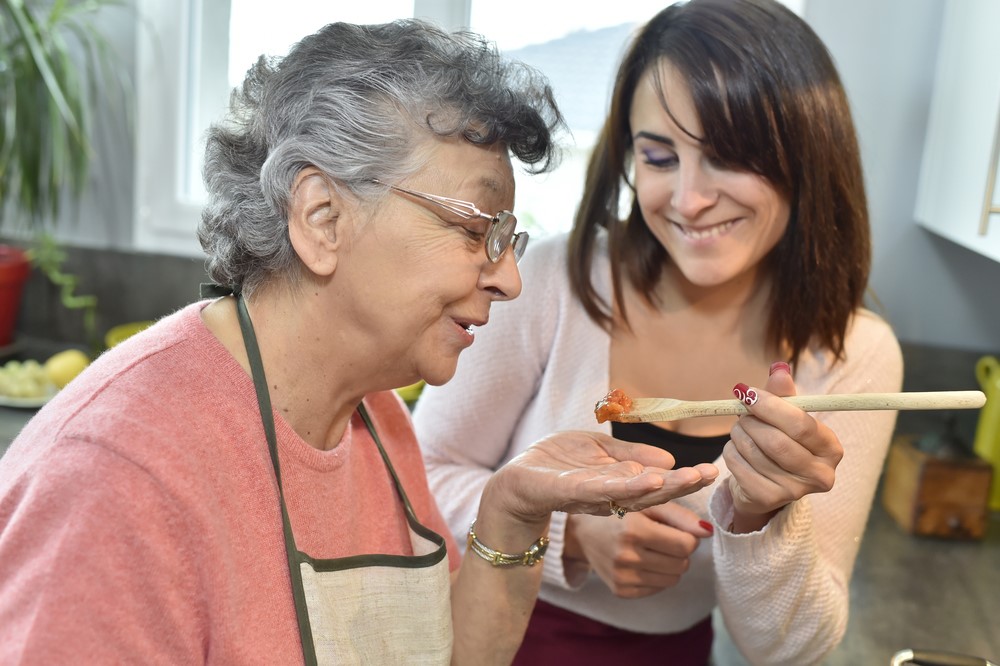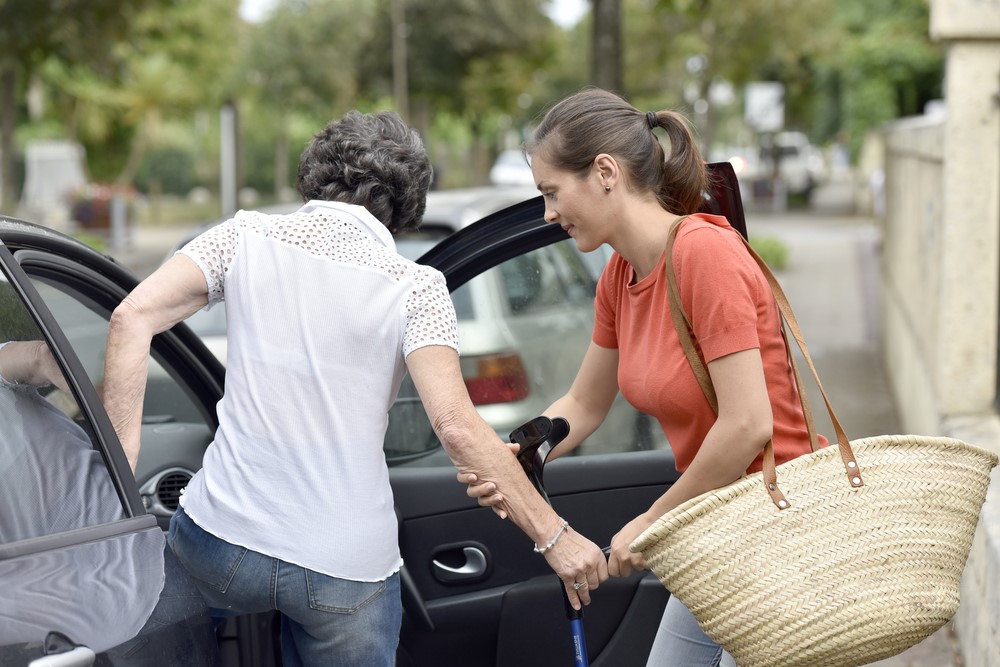
No one can do it alone all the time. Caring for a loved one is often a 24/7 job with little time off. In many situations, it might be necessary or desirable to hire a home caregiver to help with some of the challenges that you face on a day-to-day basis.
Hiring a home caregiver can be an effective approach, as it frees up time and energy for you to do what you need to. Home caregivers are sometimes referred to as direct care workers, home health assistants, home health aides, personal care aids/assistants, and more.
Some are certified nursing assistants, but often many paid caregivers providing non-medical care are women, and who have acquired their experience on the job. We should also note that immigrant women make up a substantial percentage of the workforce, and English may not be their first language. The exact figures for this population are not clear, but around 90% of home caregivers are women, and 56% of these caregivers are women of color.
To date, most states have no standardized training and requirements for home caregivers, so the level of training and experience can vary considerably from one caregiver to the next.
Do remember that when you hire a home caregiver, you are considered an ‘employer,’ and as such bear certain responsibilities. Like any employer, you must consider hourly wage, vacation time, working conditions, and be very clear about their roles and responsibilities. You also have to report this arrangement to the IRS, and account for taxes withheld, unless you choose to have a ‘cash only’, under the table arrangement, which we do not endorse.
You can find out more information about this general area in our post on taxes and caregiving.
There are different ways to hire a paid caregiver. You can post an ad on www.Care.com, post ads on other sites, or in a newspaper, even contact the County for referrals, or check with friends for references.
Perhaps you’ve decided to hire a caregiver from a home health agency because you require the caregiver to have more medical training. Regardless of where you seek them out. it’s important to get a handle on your needs at home, and what can realistically be expected of a hired caregiver.
This will vary widely, depending on the caregivers’ training, credentials, hourly rate, and more.
In this article, we provide an example of typical duties for any non-medical caregiver that you might expect. Aside from administrating medications or simple wound care, most non-medical caregivers provide a range of services.
Typically, the term non-medical caregiver refers to individuals who provide non-skilled care, focusing on areas like personal care, companionship and help around the home. So, the emphasis is on helping with day-to-day living, rather than on helping with any medical condition.
In some cases, a non-medical caregiver might be trained and licensed, but this will not always be the case.
These duties tend to be the same regardless of whether you have a live-in or an in home caregiver. The key difference between these caregiver types is simply that a live-in caregiver will stay overnight, often around three nights a week.
The caregiver duties and responsibilities in this list are all things that you can expect any caregiver to do.
Nevertheless, it is important to remember that caregiving jobs do differ from one client to the next, just as one person differs from the next. This means that task of caregiving to be slightly different for each individual patient, and patients may need (or want) more help in some areas and less in others.
1. Bathing and Grooming
The tasks of bathing and grooming cover a large range of different individual roles.
This can include showering, brushing hair, brushing teeth, shampooing hair, helping to keep fingernails and toenails healthy and many other individual tasks.
2. Light Housekeeping
A caregiver may also be involved in some light housekeeping, especially if the client lives alone.
This could include making the bed as well as cleaning the kitchen and bathroom.
This type of housekeeping is very relevant as it is important for people to live in a clean and safe environment – and the client may not be able to manage this on their own.
3. Food Preparation

Caregivers often help to make sure that seniors eat properly.
This can include doing some basic food preparation and also helping with grocery shopping.
This is one task that is likely to vary considerably from one situation to the next based on what the senior needs.
For example, if the senior is able to cook or lives with family, then the caregiver may not have to be very involved in food preparation. However, that is likely to be different if the senior lives alone.
4. Transferring the Client
Depending on the client and the situation, the caregiver may also be responsible for transferring them.
This can include transferring them from the bed into a wheelchair, transferring them into a vehicle, as well as other situations that arise.
Some clients may not require help with transference, or may need little more than a hand to keep them steady. However, that isn’t true for everyone, and some clients are incapable of transferring themselves.
5. Transportation
If the client is unable to transport themselves, it is likely that the caregiver will help to make sure that they get to doctor’s appointments and to other important locations.
In some cases, this might involve the caregiver driving the client from one place to another in the caregiver’s car or the clients.
In other cases, this might involve setting up alternative transportation like a bus.
6. Medication Assistance

Caregivers are responsible for helping to make sure their charges take their medication.
This often involves reminding them to do so, especially as seniors often do not remember when it is the right time to take medication.
Additionally, caregivers may help to make sure that the patient takes the right medication at the right time.
This can be a particularly important role, as many people requiring caregiving may be taking multiple different types of medication, and it can be easy to get confused.
7. Toileting
If necessary, a caregiver is also important for helping clients with toileting – and this task will vary depending on what the client is capable of and what they need.
A good caregiver will help with this while making sure that the client doesn’t feel embarrassed.
8. Monitoring Health Changes
Caregivers are in a good position to be able to see whether there are any issues with a person’s health.
They are also able to see whether any concerning symptoms arise.
This task is very relevant, as clients are sometimes unable to see when they have a health issue that could potentially be serious.
9. Emotional Support

Caregivers tend to spend a lot of time with a client and this gives them the ability to offer considerable emotional support and companionship.
In many cases, the caregiver may be the primary source of emotional support that a client has access to, which makes this role so important.
This means that a client should end up with a caregiver that they are able to connect with emotionally.
This will often happen simply as the caregiving-client relationship evolves.
However, sometimes a caregiver and client can be badly matched.
If that is the case, it may be worth taking the time to find a caregiver that is a better match for the client.
10. Other tasks
Because the caregiving relationship varies depending on the caregiver, the client and the situation, there are often other caregiver duties and responsibilities that may arise as the relationship develops.
For example, in some cases a caregiver might agree to do additional tasks, particularly if the client needs more help in some areas and less in other areas.
This can be seen in the way that some clients are mentally very aware and active, but struggle physically. Likewise, other clients may face mental challenges, but they are physically mobile.
Additionally, the needs of the client might change over time, especially if they have a major health scare.
These factors make it very important to keep an open dialog with the caregiver and adapt the caregiver duties and responsibilities around what is needed at the time.

Leave a Reply